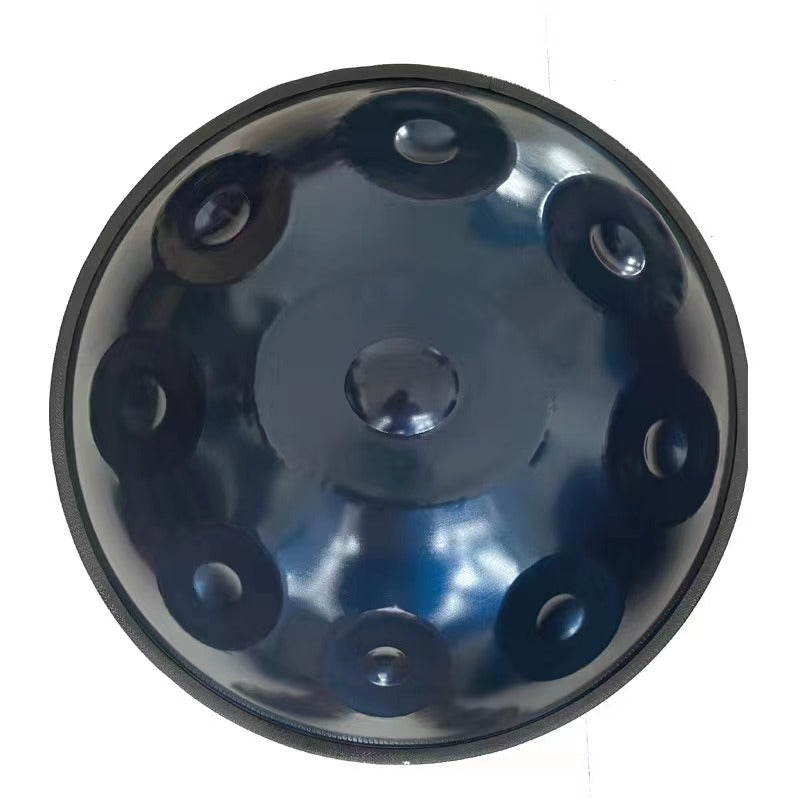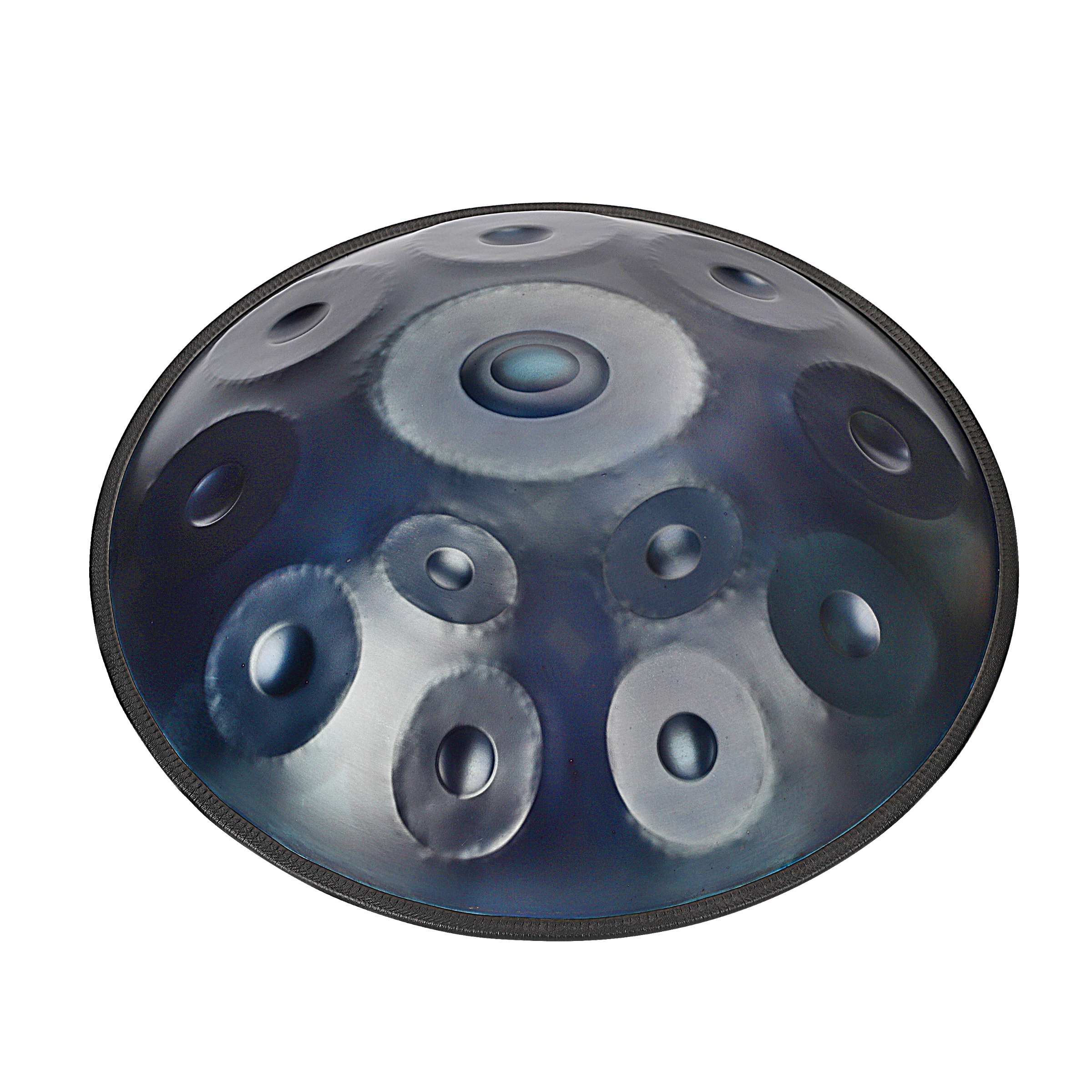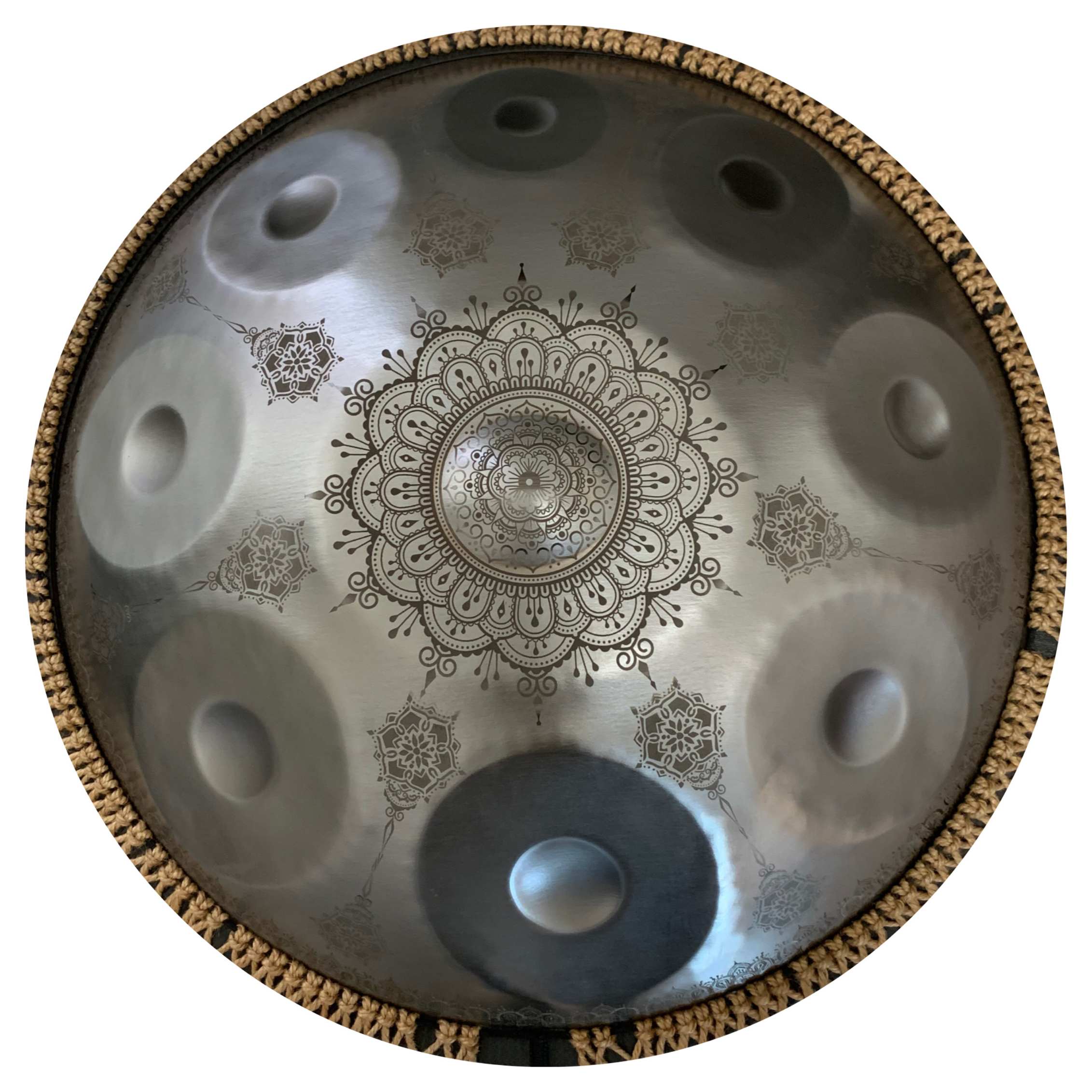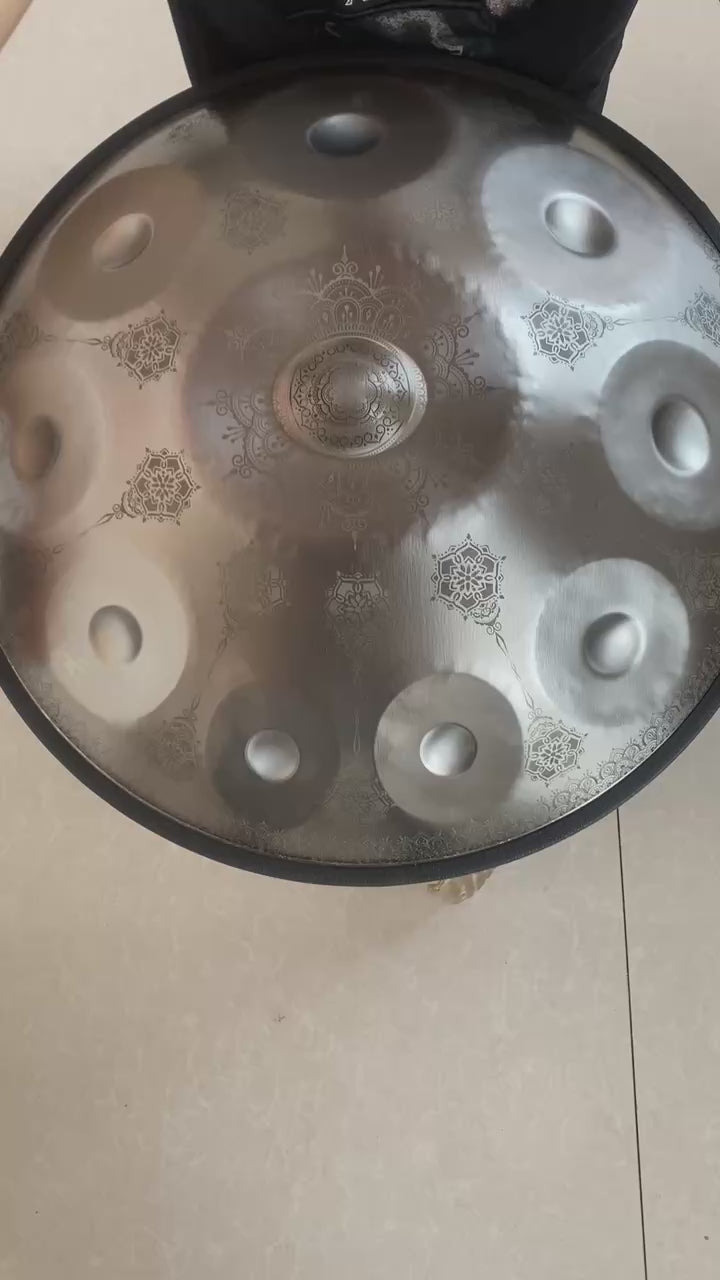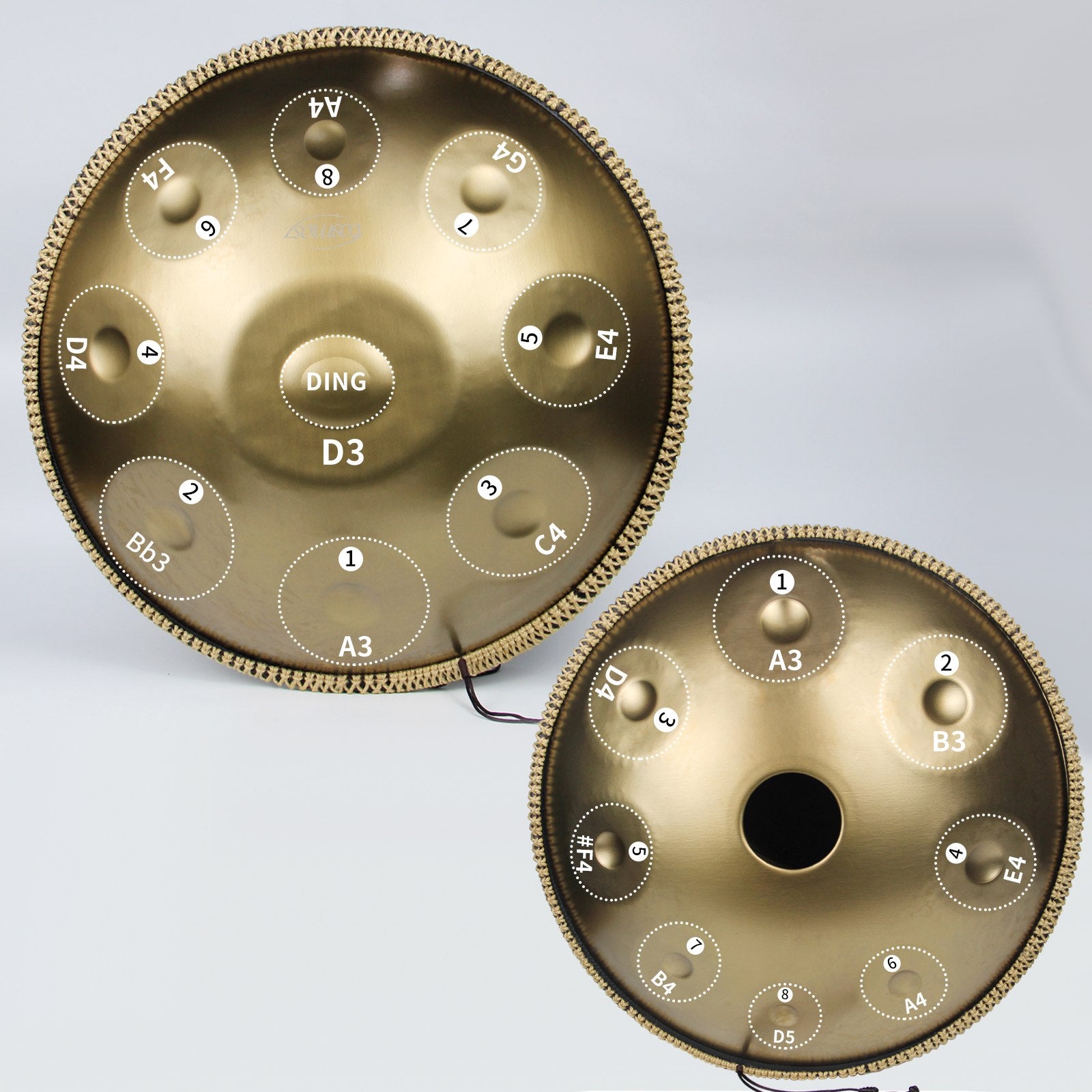
Le handpan est un instrument connu pour son son éthéré et l'amour qu'il suscite dans le monde entier. Cet instrument en acier est reconnu pour sa capacité à combiner percussion rythmique et profondeur mélodique, générant un paysage sonore apaisant et transcendant.
Au fil des ans, divers artistes qui ont eu le courage de défier les limites de la musique handpan ont réussi à ajouter leur charisme à la musique créée par les handpans. Construire cet instrument pour créer des mélodies remarquables est un processus lent et élaboré. Cet article parlera de la manière dont on crée un handpan parfait et de ce qui le rend parfait.
Différents types d'acier
Les tôles industrielles vont de DC01 à DC07 ; parmi cette gamme, l'acier le plus couramment utilisé pour fabriquer des handpans est le grade intermédiaire, DC04. Les handpans partagent les mêmes tôles industrielles qui sont utilisées dans l'industrie automobile.
Au cours des dernières années, les handpans en acier inoxydable ont gagné en popularité. Célèbre pour sa durabilité, l'acier inoxydable AISI 430 est récemment devenu couramment utilisé pour fabriquer des handpans.
Malheureusement, ce type d'acier n'est pas à l'abri de la rouille. Par conséquent, le nitruration, le chauffage et la diffusion de l'azote dans le matériau le rendent plus robuste et le protègent de la rouille. Les instruments en DC04 nitruré sont généralement connus pour leur son céramique et leur sustain relativement plus court (c'est-à-dire lorsque une note résonne).
Ember contre acier nitruré
Le facteur unique de cet instrument réside dans sa composition chimique et ses propriétés mécaniques, qui le font ressortir par rapport aux autres. De plus, en raison de ses mélodies profondes et relaxantes, il est recommandé pour le yoga méditatif.
Contrairement à l'acier nitruré, le matériau de ces handpans peut être un peu cher ; c'est pourquoi ils sont utilisés comme le deuxième meilleur instrument pour les joueurs de mains. Les harmoniques chaudes et contrôlées ainsi que le volume soutenu offrent une expérience sonore hypnotique.
Le matériau robuste de ce type de métal le rend beaucoup plus cher et compliqué à travailler que l'acier nitruré. De plus, ses harmoniques contrôlées par le son plus chaudes et ses volumes soutenus offrent une expérience sonore exquise.
Les handpans nitreded sont connus pour leur jeu percussif ou la création de mélodies avec des tons définis qui ne se mélangent pas. Ce genre d'instrument crée un ton chaud semblable à de la céramique avec une durabilité plus courte que l'acier ember.
Bien que l'acier nitruré soit immunisé contre l'oxydation, un entretien approprié est essentiel pour éviter la rouille (voir le guide d'entretien et de maintenance). Cependant, il est crucial de noter que de la rouille peut se développer avec le temps dans des conditions telles que la pluie ou les plages de sable avec de l'eau salée.
Les Coquillages
Cette partie de l'instrument commence comme une feuille plate et peut être enfoncée à la main, tournée ou roulée, profondément ou hydroformée en forme.
Coquilles dures coulées
Les coques Hand Sunk sont fabriquées avec un marteau manuel ou pneumatique/à air. Malgré la méthode chronophage, qui nécessite des milliers de coups pour mouler une moitié des coques, de nombreux fabricants préfèrent suivre cette technique par respect pour la production originale de steelpan. Il convient de mentionner que cet ensemble raisonnable crée également un son et une apparence uniques dans chaque instrument.
Coquilles filées
Deuxièmement, ce type de coque est obtenu en fixant un disque en métal sur un tour qui le fait tourner. Cette étape est maintenant suivie par le maintien d'un moule contre celui-ci, en commençant par le milieu du disque et en allant progressivement vers l'extérieur, formant le métal en forme de bol/coque pendant qu'il tourne.
Coquilles embouties
La technique du formage profond pour la fabrication de coques a été initiée par un groupe de fabricants européens, dont Shellopan et ayas, et est privilégiée par Saraz et bien d'autres. Cette méthode comprend également un moule personnalisé en forme de coque et d'anneaux, qui s'adaptent bien à une grande presse de formage profond industrielle qui imprime la forme en un minimum de temps.
Le formage profond présente également l'avantage que le matériau supplémentaire du disque peut glisser à l'intérieur des anneaux, de sorte que la forme de la coque est non seulement formée par l'étirement du matériau, mais aussi par l'écoulement du matériau supplémentaire, garantissant une distribution uniforme de l'épaisseur et une qualité constante.
Coques hydroformées
Enfin, il existe une méthode pour créer ces coques sous pression d'eau. Sunpan a initié cette méthode pour fabriquer de l'acier inoxydable pour un handpan spécial. Un joueur et fabricant célèbre, Colin Foulke, a rendu ses conceptions de 2015 accessibles au public en tant que méthode d'hydroformage utilisant de l'eau d'un nettoyeur haute pression domestique. Prenez deux cadres robustes, 24 énormes boulons, beaucoup de génie, et quelques erreurs et serpillières, et vos coques seront formées en quelques minutes.
Les notes
Créer un ton précis est l'une des parties les plus difficiles et les plus lentes de ce processus. Les moyens de garantir un ton parfait sont la clarté, la stabilité et la profondeur du ton, les harmoniques et les harmoniques distinctives, la résonance riche et l'absence de crosstalk - il est à noter que moins il y a de frappes de marteau pendant le processus d'accord, mieux c'est. De nombreux membres de cette communauté cuisent souvent leurs pans plusieurs fois pendant cette phase pour garantir la durabilité de l'accord.
Sur le dessus de la coque, la note centrale est connue sous le nom de Ding. C'est la note la plus basse et généralement la plus résonnante ; la plupart d'entre elles sont convexes, bien que certains fabricants préfèrent la version concave. En assurant la bonne technique et une friction suffisante, ce Ding peut être accordé comme un bol chantant.
Conclusion
En conclusion, l'art de fabriquer des handpans est un processus méticuleux qui allie précision technique et créativité artistique. Il consiste en des matériaux soigneusement sélectionnés comme le nitrate et l'acier inoxydable pour mouler des coques à travers diverses techniques, chaque étape contribuant au caractère unique de l'instrument.
Le choix entre l'Acier Ember et l'Acier Nitreded offre aux artistes une gamme d'options de réglage, allant des sons chauds et méditatifs aux mélodies percutantes et nettes. Ce réglage minutieux des notes garantit une profondeur mélodique, faisant de cet instrument une expérience véritablement divertissante pour le public et les musiciens.


